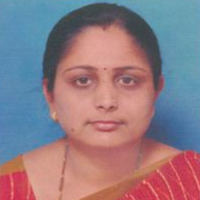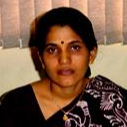International Journal of Computer Network and Information Security (IJCNIS)
IJCNIS Vol. 6, No. 4, 8 Mar. 2014
Cover page and Table of Contents: PDF (size: 427KB)
Review of Segmentation Methods for Brain Tissue with Magnetic Resonance Images
Full Text (PDF, 427KB), PP.55-62
Views: 0 Downloads: 0
Author(s)
Index Terms
Medical Image Segmentation, Adaptive Spatial Fuzzy C – means, Markov Random Field, Fuzzy Connectedness, Brain MRI
Abstract
Medical Magnetic Resonance Images (MRI) is characterized by a composition of small differences in signal intensities between different tissues types. Thus ambiguities and uncertainties are introduced in image formation. In this paper, review of the current approaches in the tissue segmentation of MR Brain Images has been presented. The segmentation algorithms has been divided into four categories which is able to deal with different intensity non-uniformity as adaptive spatial Fuzzy C - means, Markov Random Field, Fuzzy connectedness method and atlas based re-fuzzy connectedness. The performance of these segmentation methods have been compared in terms of validation metric as dice similarity coefficient, overlap ratio and Jaccard coefficient. The comparison of all validation metric at different levels of intensity non-uniformity shows that adaptive Fuzzy C - means clustering segmentation method give better result in segmentation of brain tissue.
Cite This Paper
Ritu Agrawal, Manisha Sharma, "Review of Segmentation Methods for Brain Tissue with Magnetic Resonance Images", International Journal of Computer Network and Information Security(IJCNIS), vol.6, no.4, pp.55-62, 2014. DOI:10.5815/ijcnis.2014.04.07
Reference
[1]Y.Yang, Ch. Zheng and P. Lin, “Fuzzy C - Means Clustering Algorithm with a Novel Penalty Term for Image Segmentation”, Optoelectronics Review, Vol. 13, PP: 309 - 315, 2005.
[2]R.C. Gonzalez and R.E. Woods, Digital Image Processing, Addison Wisley, (1992).
[3]A. Robatino, C.G. Wible, C.M. Portas, D. Metcalf, D. V Iosifescu, H.H Hokama, M.E Shenton, P. Saiviroonporn, R. Kikinis and R.W. McCarley, “A Digital Brain Atlas for Surgical Planning, Model-Driven Segmentation and Teaching”, IEEE Transaction on Visualization and Computer Graphics, Vol.2, PP: 232 - 241, 1996.
[4]N. Saeed, “Magnetic Resonance Image Segmentation Using Pattern Recognition, Applied to Image Registration and Quantization”, NMR in Biomedicine, Vol.11, PP: 157 - 167, 1998.
[5]A.E. Stylopoulos, D. Leon, H. Kowalski, H. Rusinek, L.A. Chandra, M.J. George, R. Smith and T. Mourino , “ Alzheimer Disease: Measuring Loss of Cerebral Gray Matter with MR Imaging”, Radiology, Vol.178, PP: 109 - 114, 1991.
[6]C. Heidtman, H. Greenberg, H. Wagner, K. Gosche, L.O. Hall, L.P. Clarke, M.L. Silbiger, M. Vaidyanathan, R. Velthuizen and S. Phuphanich, “ Monitoring Brain Tumor Response to Therapy Using MRI Segmentation”, Magnetic Resonance Imaging Vol.15, PP: 323 - 334, 1997.
[7]N.A. Mohamed, S. Yamany, M.N. Ahmed, A.A. Farag and T. Moriarty, “Modified Fuzzy C-Mean in Medical Image Segmentation”, IEEE Transaction Medical Imaging, Vol. 22, PP: 193 - 199, 2002.
[8]J. Costanini, J. Listerud and L. Axel, “Inhomogeneity Correction in Surface-Coil MR Imaging”, American Journal of Roentgenology, Vol. 148, PP: 418–420, 1987.
[9]A. Simmons, G.J. Barker, P.S. Tofts and S.R. Arrdige, “Sources of Intensity Nonuniformity in Spin Echo Images at 1.5 T”, Magnetic Resonance in Medicine, Vol. 32 PP: 121–128, 1994.
[10]B. Likar, F. Pernus and U. Vovk, “A Review of Methods for Correction of Intensity Inhomogeneity in MRI”, IEEE Transaction of Medical Imaging, Vol. 26, PP: 405 - 421, 2007.
[11]A. Manduca, B.H. Brinkmann and R.A. Robb, “Optimized Homomorphic Unsharp Masking for MR Grayscale Inhomogeneity Correction”, IEEE Transactions on Medical Imaging, Vol. 17, PP: 161–171, 1998.
[12]B. Mackiewich, B. Johnston, M. Anderson and M.S. Atkins “Segmentation of Multiple Sclerosis Lesions in Intensity Corrected Multispectral MRI”, IEEE Transactions on Medical Imaging, Vol. 15, PP: 154–169, 1996.
[13]B.E. Chapman, D.L. Parker, E.G. Kholmovski and P. Vemuri, “Coil Sensitivity Estimation for Optimal SNR Reconstruction and Intensity Inhomogeneity Correction in Phased Array MR Imaging”, Lecture Notes in Computer Science, Vol. 3565,PP: 603–614 , 2005.
[14]A. Jackson, E.A. Vokurka, N.A. Watson, , N.A. Thacker and Y. Watson, “Improved High Resolution MR Imaging for Surface Coils Using Automated Intensity Non-Uniformity Correction: Feasibility Study in the Orbit”, Journal of Magnetic Resonance Imaging, Vol.14 ,PP:540–546, 2001.
[15]J.C. Kruggel and J.C. Rajapakse, “Segmentation of MR Images with Intensity Inhomogeneities”, Image and Vision Computing, Vol. 16, PP:165–180,1998.
[16]Y. Zhang, M. Brady, S.S. Smith, “Segmentation of Brain MR Images through a Hidden Markov Random Field Model and the Expectation-Maximization Algorithm”, IEEE Transactions on Medical Imaging, Vol. 20, PP: 45–57, 2001.
[17]J.C. Bezdek, L.O. Hall and L.P. Clarke, “Review of MR Image Segmentation Techniques Using Pattern Recognition”, Medical Physics, Vol. 20, PP: 1033–1048, 1993.
[18]D.L. Pham and J.L. Prince, “Adaptive Fuzzy Segmentation of Magnetic Resonance Images”, IEEE Transactions on Medical Imaging, Vol. 18, PP: 737–752, 1999.
[19]L. Yu and M.Y. Siyal, “An Intelligent Modified Fuzzy C-Means Based Algorithm for Bias Field Estimation and Segmentation of Brain MRI”, Pattern Recognition Letters Vol. 26, PP: 2052–2062, 2005.
[20]B. Likar, F. Pernuˇs and J. Derganc, “Nonparametric Segmentation of Multispectral MR Images Incorporating Spatial and Intensity Information”, Proceedings of SPIE Medical Imaging, Vol. 4684, PP: 391–400, 2002,
[21]A.C. Evans, A.P. Zijdenbos and J.G. Sled, “A Nonparamtertic Method for Automatic Correction of Intensity Nonuniformities”, IEEE Transactions on Medical Imaging, Vol. 17, PP: 87–97, (1998)
[22]B. Likar, F. Pernuˇs and U. Vovk, “MRI Intensity Inhomogeneity Correction by Combining Intensity and Spatial Information”, Physics in Medicine and Biology, Vol. 49, PP: 4119–4133, 2004.
[23]C. Brechbuchler, G. Gerig,, G. Székely and M. Styner, “Parametric Estimate of Intensity Inhomogeneities Applied to MRI”, IEEE Transactions on Medical Imaging Vol.19 , PP: 153–165, 2000.
[24]A. Pfefferbaum and K.O. Lim, “Segmentation of MR Brain Images into Cerebrospinal Fluid Spaces, White and Gray Matter”, Journal of Computer Assisted Tomography, Vol.13, PP: 588 - 593, 1989.
[25]M.F. Tolba, M.G. Mostafa, T.F. Gharib, M.A. Megeed, “MR Brain Image Segmentation using Gaussian Multiresolution analysis and EM algorithm”, Proceeding ICEIS 2003.
[26]J. Ohja, L. Luo and R Xu, “ Segmentation of Brain MRI” book Chapter No. 8 , Advances in Brain Imaging, PP: 143 - 170.
[27]H.B. Kekre and S. Gharge, “Segmentation of MRI Images using Probability and Entropy as Statistical Parameters for Texture Analysis”, Advances in Computational Sciences and Technology Research India Publications, Vol. 2 , PP: 219 - 230 , 2009.
[28]B. Buyuksarac and M. Ozkan “Image Segmentation in MRI Using True Ti and True Pd Values.” Proceedings Engineering in Medicine and Biology Society, 23rd Annual International Conference IEEE, Vol. 3, PP: 2661 – 2664, 2001.
[29]B. Xavier, “A Short Guide on a Fast Global Minimization Algorithm for Active Contour Models” 2009.
[30]B. Xavier, E. Selim, V. Pierre, T.J. Philippe, O. Stanley, “Fast Global Minimization of the Active Contour / Snake Model”, Journal of Mathematical Imaging and Vision, Vol. 28, PP: 151 - 167, 2007.
[31]M. Khare, R.K. Srivastava, A. Khare, “Performance Evaluation on Segmentation Methods for Medical Images”, Conference ACAI’11, PP: 44 - 49, 2011.
[32]A. Noe, J.C. Gee and S. Kovacic, “Segmentation of Cerebral MRI Scans Using a Partial Volume Model, Shading Correction and an Anatomical Prior”, Proceeding of SPIE, PP: 1466 - 1477, 2001.
[33]A.P. Dempster, D.B. Rubin, and N.M. Laird, “Maximum Likelihood from Incomplete Data Via the EM Algorithm”, Journal of the Royal Statistical Society, Series B Methodological, Vol. 39, PP: 1 - 38, 1977.
[34]F. Schoenahl, H. Zaidi, M.L. Montandon, and T. Ruest, “Comparative Assessment of Statistical Brain MR Image Segmentation Algorithms and Their Impact on Partial Volume Correction in PET”, NeuroImage Vol. 32, PP: 1591 - 1607, 2006.
[35]S.Z. Li, “Markov Random Field Modeling in Computer Vision”: book Markov Random Field Modeling in Computer Vision: Springer - Verlag Newyork, PP : 231 - 257,1995.
[36]C. Xu , D.L. Pham and J.L. Prince, “A Survey of Current Methods in Medical Image Segmentation”, book Chapter No. 8, Annual review of Biomedical Engineering Vol. 2 , PP: 1 - 26,1998.
[37]B.J. Krause, E.R. Kops, K. Held, R. Kikinis, W.M. Wells, “Markov Random Field Segmentation of Brain MR Images”, IEEE Transaction of Medical Imaging, Vol. 16, PP: 878 - 886, 1997.
[38]A.W.C Liew, S.H.Leung and W.H. Lau, “Fuzzy Image Clustering Incorporating Spatial Continuity,” Instrumentation and Electrical Engineering Proceeding Vision, Image and Signal Processing, Vol. 147, PP: 185 - 192, 2000.
[39]A.W.C. Liew and H. Yan, “An Adaptive Spatial Fuzzy Clustering Algorithm for 3D MR Image Segmentation”, IEEE Transaction of Medical Imaging, Vol. 22, PP: 1063 - 1075, 2003.
[40]J.K. Udupa and S. Samarasekera, “Fuzzy Connectedness and Object Definition: Theory, Algorithms and Applications in Image Segmentation”, Graphical Models and Image Processing, Vol. 58, No. 3, PP: 246 - 261, 1996.
[41]Udupa and P. Saha, “Fuzzy Connectedness and Image Segmentation” IEEE Proceeding, Vol. 91, PP: 1649 - 1669, 2003.
[42]D. Odhner, J.K. Udupa and P. Saha, “Scale Based Fuzzy Connected Image Segmentation: Theory, Algorithms and Validation”, Computer Vision and Image understanding, Vol. 77, PP: 145 - 174, 2000.
[43]B. Patenaude, D. Kennedy, D. Rueckert, J. Schnabel, K.O. Babalola, M. Jenkinson, P. Aljabar, S. Smith, T. Cootes and W. Crum, “An Evaluation of Four Automatic Methods of Segmenting the Subcortical Structures in the Brain” , NeuroImage Vol. 47, PP: 1435 – 1447, 2009.
[44]Lisa Gottesfeld Brown, "A Survey of Image Registration Techniques". ACM Computing Surveys, Vol. 24, PP: 325 - 376, 1992.
[45]J. Bai and Y. Zhou “Atlas Based Fuzzy Connectedness Segmentation and Intensity Non-uniformity Correction applied to Brain MRI”, IEEE Transaction of Biomedical Imaging, Vol. 54, PP: 122 - 129, 2007
[46]A. Hammer sc, D. Rueckert, J.V. Hajnal, P. Aljabar and R.A. Heckemann, “Automatic Anatomical Brain MRI Segmentation Combining Label Propagation and Decision Fusion”, NeuroImage Vol. 33, PP: 115 – 126, 2006.

